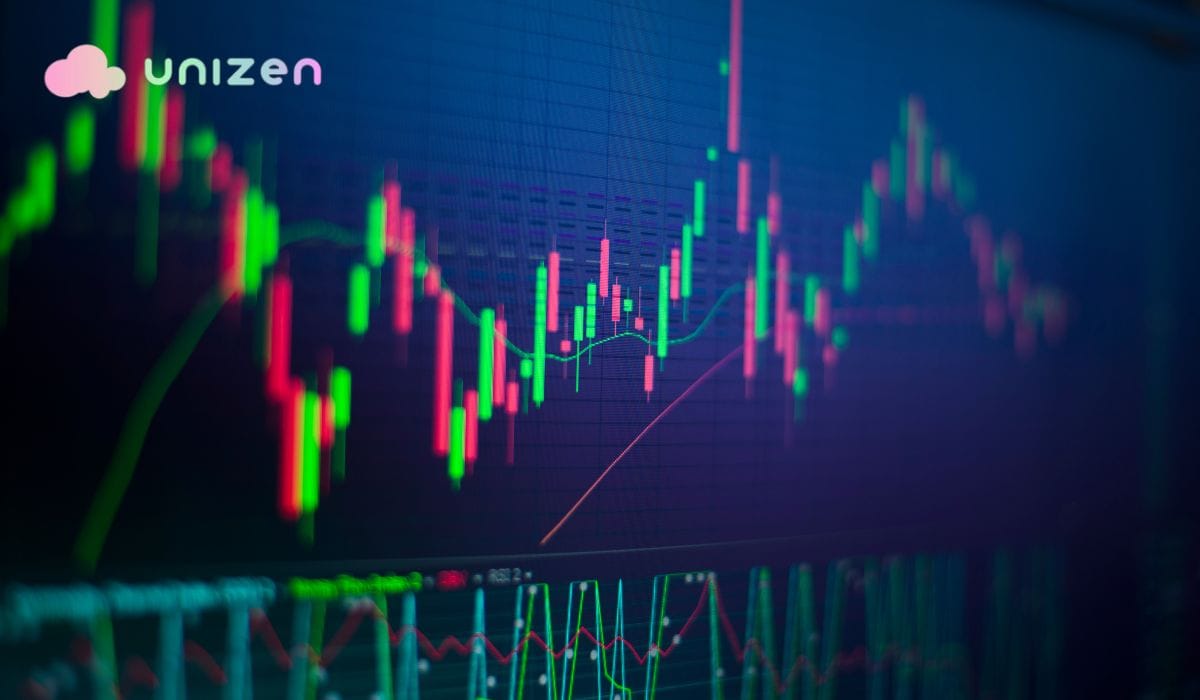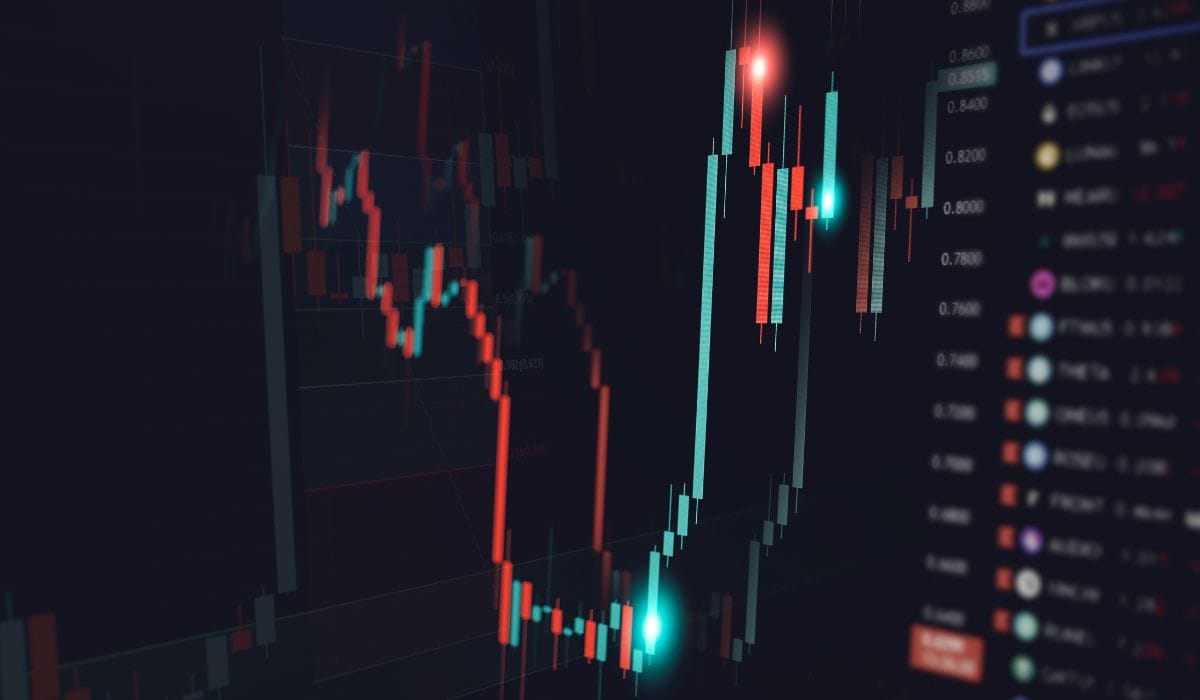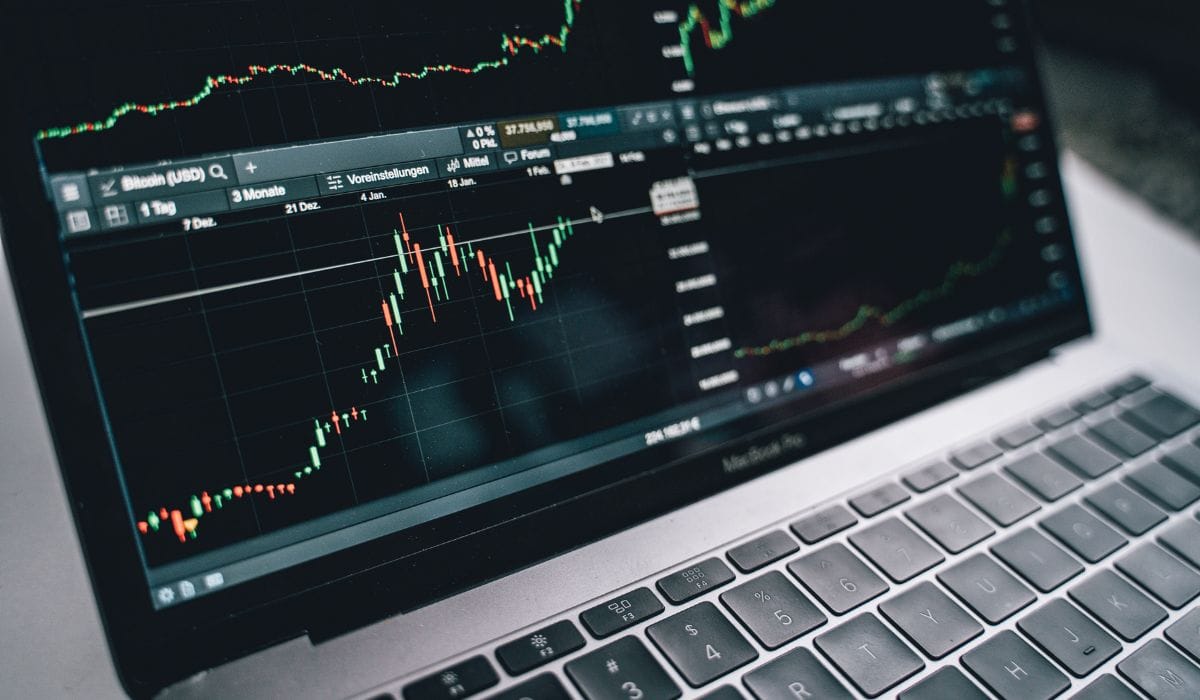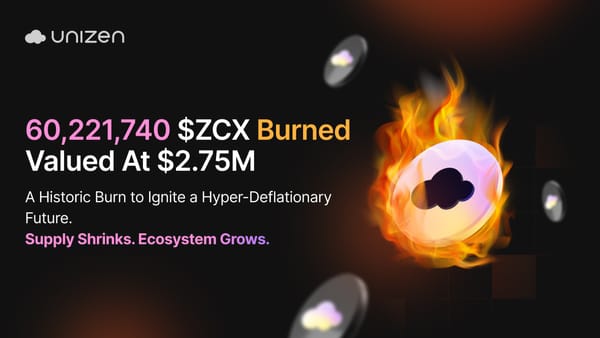A Detailed Guide on How to Read Candlesticks in Crypto Trading
Learn how to read candlesticks in crypto trading to identify market trends, patterns, and opportunities, helping you make informed decisions in volatile markets.

Traders who work within the crypto trading market have to stay in touch with price motion always because this is one of the fundamental aspects of the crypto business. The most useful tool when it comes to studying these movements is the candlestick chart. These charts provide an all-around perspective of the market and contain the feelings and assessments of the traders.
The beginning of candlestick analysis lies in rice trading practice of Japan in the 18th century but it is now among the most frequently applied technical analysis tools. Since it is capable of presenting elaborate price information in simple and easily understandable formats, it is an invaluable tool for any trader interested in making profit within the cryptocurrency market.
Cryptocurrencies are also different from conventional markets – they never close, and they have higher and faster fluctuations. Candlestick charts help the trader interpret such price action and recognize specific patterns that indicate certain opportunities or threats. Understanding candlesticks crypto helps traders to triumph over this volatility and make better decisions. This guide will teach you how to read a chart, as well as its basics and important components. Upon the end of the article, you will be strategically placed to use a candle chart to screen your trading plan.
Basics of a Candlestick Trading Chart
Candlestick charts comprise several “candles,” which reflect the price patterns for a particular time interval. These candles provide traders with four key data points: the opening price, the closing price, and the highest and lowest price quotes depending on the duration of the period required for analysis. Knowing how to read candlesticks in crypto begins with understanding these essential components.
Structure of a Candlestick
Each candlestick is composed of three main parts:
The Body
The body of the candle is that big block in the middle that represents the difference between the opening and closing prices. It is the largest part of the candlestick and contains useful information about the direction of the market.
- Green Body: Suggests that the price at the market close is higher than the opening price indicating bullish momentum and upward movement.
- Red Body: Bears a message that the closing price is below the opening prices illustrating the bearish sentiment and downward movement.
Wicks (or Shadows)
From the top and the bottom of the body, the wicks illustrate the high and the low price of the period of trading.
- Upper Wick: Reflects the highest price.
- Lower Wick: Reflects the lowest price.
The length of the wicks can suggest an increase in risk. High wicks mean high up and down movements, while low wicks depict stable trading.
Colors
Color is extremely essential for faster outcome interpretation for the market.
- Green (or White): Suggests price increase during the chosen period of time to point out strong bullish activity. It indicates a trend towards higher levels but does not indicate a shift in future prices.
- Red (or Black): This is indicative of a bearish trend, showing a fall in the price over the period.
Understanding these elements is key when mastering how to read candlesticks in crypto effectively.
Note: Some Platforms allow you to customize the colors so that a green (or white) candle would indicate a bearish trend and a red (or black) candle would indicate a bullish trend.

Importance of Timeframes
Candlesticks can be as short as one minute and as long as one month, and thereafter. Depending on the chosen period, the chart is interpreted in a thoroughly different way.
- Short Timeframes (1-5 minutes): Suitable for scalpers who seek to make trades in not more than minutes.
- Medium Timeframes (15 minutes to 1 hour): Intraday charts and patterns particularly beneficial if employed by a day trader trying to interpret intraday movements.
- Longer Timeframes (4 hours to daily): Good for swing traders focusing on the direction of the market or trends.
The ability to select intervals offers the opportunity to bring the analysis in line with a trader’s approach. Incorporating the knowledge of how to read candlesticks in crypto within these timeframes helps traders gain a comprehensive understanding of market movements.
Understanding Key Candlestick Charts Components
To effectively read candlestick charts, it’s essential to understand the four main data points each candlestick conveys:
- Open: The initial price at which the trading volume takes place; this is also when the trading time is initiated.
- Close: The latest price that is recognized when trading is complete; everyone who wishes to buy has bought, and everyone who wishes to sell has sold.
- High: The last price the asset attained all through the period under consideration.
- Low: The price in the financial period at which the asset hit the lowest ebb.
The relatedness between these components forms the candlestick's shape, which reflects market sentiment:
- Bullish Candlestick: A green body suggests buyers are more authoritative in setting the prices higher.
- Bearish Candlestick: A red body tells us that sellers are more than buyers, and hence prices are pushed down.
Since the size of the body and wicks reflect the literal size of the candle, traders can determine the buying or selling pressure amount. For example:
- Long Green Body: Strong buying momentum.
- Long Red Body: Intense selling pressure.
- Small Body with Long Wicks (Doji): Reflected on a lack of clear direction in the market.
Common Candlestick Chart Patterns
Candlestick formations are the foundation of technical analysis, they give the trader information on the mental state of the market and possible future trends. These patterns are single, double, and triple candlesticks which differ in the implications they have on the market. Showing the correlation between these two variables need to be examined in detail.
Single Candlestick Patterns
Doji
A Doji forms if the difference between the opening and closing prices are almost the same thus forming a small body marked by long wicks.
- Significance: Shows that the market is uncertain, and that buyers and sellers cannot over succeed each other.
- Application: They occur during the upside and downside price consolidation regions, therefore a Doji at the top or at the bottoms is a clear warning of a reversal.
Hammer
A hammer is where you have a small body near the top part of the range and a long lower wick, which resembles the shape of a hammer.
- Significance: An indicator of a possible bullish reversal after a bearish trend since buyers take charge of the market.
- Application: When a hammer is formed at a support level, it amplifies the bullish signal generated by the formation.
Shooting Star
The opposite of a hammer candle, with a small real body near the bottom of the price range and a long upper wick.
- Significance: Suggests that the selling pressure is reducing and that there is a potential selling pressure and a reversal of bullish momentum.
- Application: A bullish signal is when there is a morning star after a downtrend.
Double Candlestick Patterns
Bullish Engulfing
The recent green candle covers the previous red candle.
- Significance: The plot demonstrates a clear indication of a high reversal to the ‘bullish’ territory after a down trend.
- Application: It is most effective when you trade it at crucial support areas or after a prolonged decline
Bearish Engulfing
A red candle covers an entire green candle from the previous period.
- Significance: Analysed to give a clear indication of bearish excitement following the upward move.
- Application: It is used near the resistance levels to look forward to some pullback in prices.
Triple Candlestick Patterns
Morning Star
A bullish reversal formation on the chart is a three-candlestick formation. It involves a black candle that is long, a Doji or Spinning Top candle that is small but indecisive and a green long candle.
- Significance: When selling pressure decreases, buying pressure increases, meaning that buyers are in control.
- Application: The most important signal is a bullish signal when a morning star appears after a downtrend.
Evening Star
The opposite of the morning star, indicates bearish reversal. It is made of two technical elements: a green daily candle that is long, an indecisive daily candle, and a long red candle.
- Significance: This shows that there is a reduced buying interest, and now people are selling.
- Application: Good for identifying trends that are near a resistance strip.
Three White Soldiers
This is a formation of three green candles successively, with the high of each candle’s real body higher than the high of the previous candle.
- Significance: It indicates a very strong bullish moment reversal; when the signal points upward, it signifies the beginning of an uptrend.
- Application: Best observed at key support levels or following a prolonged decline.
Three Black Crows
This is often known as ‘breakthrough’, this is formed by three candles making three descents in sequence all of which are red.
- Significance: Signals bearish pressure, typical of an initial stage of a bearish market run.
- Application: Used after an extended bullish run or when prices are at a certain key resistance level.

How to Use and Read Candlesticks in Crypto Trading
Candlestick charts are not only markers but in fact tools for analysis as well as tools for placing the trade in the market. Here's how you can leverage candlesticks effectively:
Trend Identification
Market trends can therefore be easily pointed out when using candlestick charts.
- Uptrend: A series of higher high and higher low patterns deciphered by a series of bullish candles.
- Downtrend: This includes a lower high formation and lower lows that imply frequent bearish candle incidence.
- Sideways Market: The market which is characterized by a volatility that fluctuates with the bullish and bearish candlesticks within the same price level.
Support and Resistance Levels
Support and resistance levels are important areas in which candlesticks facilitate the process of determination.
- Support Level: The price at which an asset gains buying interest, normally identified by a hammer or bullish engulfing patterns.
- Resistance Level: The price at which a particular asset experiences selling pressure in the candlestick, such as shooting stars or bearish engulfing.
Market Sentiment
Human emotions can be identified by candlestick patterns.
- Bullish Sentiment: Seen in formations ranging from morning stars or three white soldiers and many others.
- Bearish Sentiment: Indicated by patterns like the evening stars or three black crows.
Confirmation with Other Indicators
Candlesticks are strong, but adding more indicators makes them reliable.
- Relative Strength Index (RSI): Helps to verify the fact whether a certain stock is either overbought, oversold or not.
- Moving Average Convergence Divergence (MACD): Indicates momentum shifts.
- Bollinger Bands: Detect the cases of volatility and preconditions for separate tools to break out.
Candlestick Chart Timeframes
Selecting the right time frame is essential for aligning candlestick analysis with your trading style:
Scalping: Timeframe: 1–5 minutes.
- Purpose: It is an act of buying and selling shares within the shortest time of the changes in the price of the stock.
- Application: This event draws value from a pattern such as Dojis or Shooting Stars, which implies short-term reversal.
Day Trading: Timeframe: 15 minutes to 1 hour.
- Purpose: Swing trading looks at making trades through buying and selling within a single trading day.
- Application: Intraday trends are identified with the help of Engulfing patterns and Morning/Evening Stars.
Swing Trading: Timeframe: 4 hours daily.
- Purpose: More extended trade cycles that rely on the development of merely overall market trends.
- Application: In case you want to analyze trends, use formations such as Three White Soldiers or Three Black Crows.

Pros and Cons of Candlestick Charts
Candlestick charts are unique in trading in the sense that they give an outlook into price action in cryptocurrencies but like every other tool, they are not without their drawbacks.
Pros of Candlestick Charts
- Visually Intuitive: It has different colors for the body and wick to make it easier to analyze trends and determine the general sentiment in the market. Learning how to read candlesticks in crypto helps traders spot patterns and react quickly.
- Detailed Price Information: Unlike line charts, which show only closing prices, Candlestick charts allow the Open, high, low, and close(OHLC) charts to be available where the full picture of the price movement is necessary; it is an option on the candlestick charts. Knowing how to read candlesticks in crypto allows traders to interpret this data effectively.
- Trend Identification: The three White Soldiers and Shooting Stars pattern helps traders recognize opportunities and is a reliable way of mastering how to read candlesticks in crypto.
- Adaptable Across Timeframes: Having the candles painted at every chart time frame makes them ideal for scalping and swing trading, although not limited to those time frame types.
- Supports Technical Analysis: Candlestick patterns are compatible with other indicators such as RSI and Bollinger Bands allow a well rounded approach for market analysis.
Cons of Candlestick Charts
- Requires Expertise: The ability to interpret patterns can be better described as accurate, which requires time, practice, and experience. Newcomers will interpret patterns, and this may go wrong in most cases due to lack of practice.
- Subjectivity: It is ambiguous as the effectiveness of a pattern may occur under certain market circumstances, although its meaning is definite.
- Limited in Low-Volume Markets: Candlestick patterns are inconclusive in the low volume conditions where the price fluctuations, even those based on past prices are unexpected.
- Confirmation Needed: Professional candlestick traders always provide candlestick patterns with other forms of validation to avoid fake signals. Combining tools with knowledge of how to read candlesticks in crypto ensures more reliable decisions.
Common Mistakes to Avoid in Crypto Candlestick Pattern
Even the experienced trader has the tendency to go wrong in the interpretation of Candlestick charts. Here are common pitfalls and how to avoid them:
Over-relying in Candlestick Patterns
- Mistake: When every pattern is thought to promise a certain result.
- Solution: Pattern has to be considered part of a holistic methodology that considers other factors into account. Check it with other signals and market situations.
Ignoring Market Context
- Mistake: Using pattern analysis without at least a general understanding of market tendencies, value levels, or support resistance areas.
- Solution: Never look at the candlesticks in isolation but in relation to the whole market.
The Concern of Appropriate Timeframes
- Mistake: Misapplication of short-term patterns to long-term trades or equally applying long-term patterns to short-term trades.
- Solution: Candlestick patterns may be used in any time frame that corresponds to a particular trading strategy.
Over-trading Based on Patterns
- Mistake: Pulling into trades with no strategy in mind after identifying a bias on the chart.
- Solution: Trading should be done with a specific plan that has to be followed, while risk management should always be followed.
Neglecting Volume Analysis
- Mistake: Failing to consider the volume data in terms of the pattern.
- Solution: Volume should be used as a confirmation tool to supplement the strength of patterns at the breakout or after a reversal signal.
Tools and Platforms for Candlestick Analysis
For candlestick charts to be as effective as they are supposed to be, traders require as many effective tools and platforms as possible. Here are some popular options for crypto traders:
- Trading View: One of the most popular platforms with enhanced charting features, added options for indicators, and a rich list of popular candlestick formations. Perfect for beginners and veterans, easy to use the interface and has many online resources to turn to.
- Binance: One of the largest centalized exchanges, with the inclusion of candlestick charts. It’s an excellent source of real-time information that can be exported to different timeframes and features core tools for drawing on graphic displays.
- Coinbase Pro: An advanced trading place that has enhanced candlestick chart tools. It provides high liquidity and relatively low interference when it comes to viewing and trading various cryptocurrencies.
- Kraken: A popular and secure platform with clear candlestick analysis. With a view to its effectiveness, security, and versatility, Kraken’s charting platform benefits both day and swing traders.
Importance of Customizing Charts for Better Visibility
When customizing charts for optimal trading efficiency, consider the following elements:
- Candlestick Colors: Use light-colored ink for analyzing a bullish or bearish candle with green representing bullishness and red for the bearishness of the prices. Change parameters to enhance visibility over the background.
- Background Color: It reduces eye strain, especially due to prolonged trading, and thus the background color should be neutral or black. It is also important not to use high contrast colors so that the information put on the chart is easily visible to everyone.
- Gridlines: They should be thinned out slightly in order to reduce the chart’s clustering while at the same time providing clear reference points in the price levels. Control how tightly the gridlines are packed to best fit the type of analysis you will be doing commonly.
- Indicator Colors: the extension also recommends assigning different and specific colors to the numerous indicators such as moving averages, RSI, or Bollinger Bands.Thin the lines so as to make the stress placed on the most important indicators exaggerated but not clutter the chart.
- Volume Bars: When coloring volume bars it would be best to use colors that are complementary to the color used in the candlesticks, for instance green for high buying volumes and red for selling volumes. Compare the volume in periods and present trends in the volume for better understanding of the momentum of the particular market.
- Price Levels and Labels: Modify the language, type and color of the price tags depending on your preference to help you read conveniently. The crucial support and resistance levels should be underlined using the respective strong ink (sharp or neon color for the preferences).
- Chart Type and Timeframe: Based on the trading style selected, one can choose from the different charts these being candlestick, line or bar charts. It’s recommended to set default temporary periods of having quick access as ‘favourite’ views.
- Crosshairs and Cursor: Turn on/cross-change the crosshairs to the fore point to the price /time axes with precision. As a rule, the cursor should be made less visible so as not to distract the tracking on some rather detailed charts. When you choose these elements according to your taste, they provide you with a maximally visually free chart, which lets you avoid distractions and make correct decisions on trade.
Conclusion
How to read candlesticks in crypto is quite useful for crypto traders because it presents a snapshot of the market that entails the value changes of a particular crypto asset and the sentiment change within the market. Everything from basic formations like Dojis, Hammers to complex formations like Morning Star formations enable the trader to determine trends, trend reversals and basically the dynamics of the market. Knowing how to read candlesticks in crypto is essential to understanding these patterns and making informed trading decisions.
However, candlesticks alone are not sufficient for the purpose. To trade it is necessary to look at the bigger market picture, check patterns with RSI, Bollinger Bands or volume, also be disciplined in your approach. Learning how to read candlesticks in crypto provides the foundation for interpreting the market, but a holistic strategy that integrates multiple indicators ensures better accuracy.
It is always advisable to stick to candlestick charts together with other approaches and good knowledge about the markets. By mastering how to read candlesticks in crypto and leveraging reliable platforms like TradingView and Binance, you can make informed decisions, navigate volatility, and maximize opportunities in the fast-paced crypto market.



